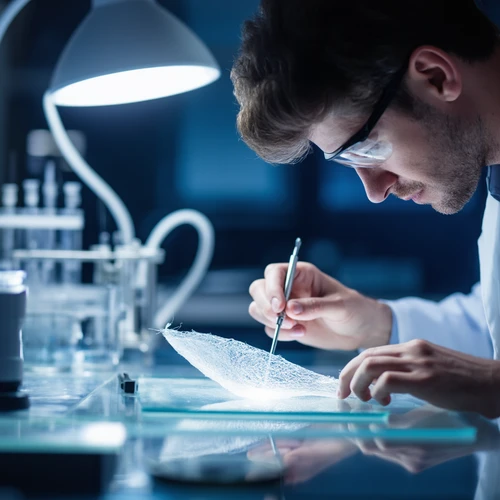The tendon, often overlooked in musculoskeletal research, is a complex structure that triggers intricate cellular responses during injury. A recent study published in Nature Communications by researchers from the University of Rochester has for the first time identified and manipulated key cells involved in tendon healing—the epitenon cells—that form a thin outer layer around tendons. This discovery reveals striking similarities between mouse and human cell activity, potentially leading to innovative treatments for this common yet poorly understood health issue.
Nature CommunicationsFlexor tendon injuries in the hand require about 300,000 surgeries each year at a cost of $400 million annually in healthcare expenses.
While surgical repair is common for severed tendons, healing often falls short due to weak cell regeneration and excessive scar formation. Up to 24% of patients with injured flexor tendons need secondary surgery to remove extra scar tissue. Currently, no post-operative interventions improve tendon healing beyond physical therapy. Only recently has research started exploring cellular biology in tendons as a potential therapeutic approach.
The University of Rochester's Center for Musculoskeletal Research (CMSR) is among the few institutions globally focusing on tendon healing at the cellular level, uncovering the complexities and diversity of tendon cells and their interactions during the healing process.
Traditionally viewed as simple structures, recent research has revealed tendons to be highly complex. CMSR researchers are investigating various cell populations at injury sites and how they either facilitate or hinder healing.
"One challenge in tendon repair is identifying specific cell populations," said lead author Anne Nichols, Ph.D., assistant professor of Orthopaedics at the Center for Musculoskeletal Research. "Tendons generally heal poorly, with different regions undergoing distinct fibrosis patterns. Effectively targeting these areas requires tailored approaches to modulate the healing process."
In tendon surgery, reconnected ends form critical scar tissue essential for functionality. However, excessive scarring outside repair sites can restrict finger motion. Nichols and her team found that inhibiting specific cellular processes in epitenon cells at precise times reduces excess scar formation without sacrificing tendon stability.
Nature CommunicationsEarlier studies focused on tenocytes, specialized cells within tendons responsible for structure maintenance. This study turns attention to epitenon cells, identified as primary players in early tendon healing and collagen formation.
"We recognized the importance of the epitenon cell population but struggled to target them," Nichols said. Her team discovered a genetic marker to track and manipulate these cells.
Nature CommunicationsThe researchers used genetic lineage tracing and single-cell RNA sequencing to study epitenon cells post-tendon injury in mice for the first time.
"In tendon healing, timing is crucial but location matters too," Nichols noted. The team observed that a subset of epitenon-derived cells moved into bridging tissues supporting tendon repair, while a larger percentage migrated to form scar capsules around injuries. This dual role suggests these cells aid productive healing and contribute to unwanted scarring.
"We found a fibrotic peak in injured tendons between days 7-10 post-injury; focusing on this window, we wanted to see how removing pro-fibrotic epitenon cells affects healing."
When researchers suppressed epitenon-derived cells using genetically encoded toxins during optimal time frames, they significantly improved tendon movement in mice.
To show clinical relevance, the team compared mouse and human epitenon cell data from donated healing tendons. "The problematic scar-forming cells found in mice also exist in human scars," Nichols said, suggesting similar roles and potential therapeutic benefits in humans.


